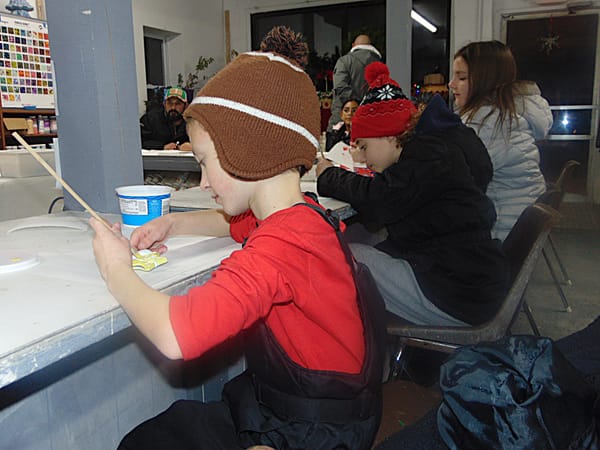Final Congressional district maps keep Stateline area in solidly-Republican 16th District
Rep. Adam Kinzinger says he won't seek re-election to the 16th District.

SPRINGFIELD – Illinois lawmakers gave final approval in the early hours of Friday morning, Oct. 28, 2021, to a new congressional redistricting plan that divides the state into 17 districts, one fewer than it currently has due to its loss of population since the 2010 U.S. Census. View the map here.
Both Roscoe and Rockton will remain in the 16th District. Because of changing boundaries, Rep. Adam Kinzinger, the 16th District incumbent, would have faced Rep. Darin LaHood, the 18th District incumbent, in the Republican primary, effectively eliminating a Republican member of Congress.
However, Kinzinger announced on Friday morning that he will not seeking re-election. In a Twitter video, he said, "I cannot focus on both a reelection to Congress and a broader fight nationwide." He added, "I want to make it clear. This isn't the end of my political future, but the beginning." In the video, he invited his viewers to visit his Country First website. Kinzinger was one of only 10 Republicans who voted to impeach Donald Trump.
The final 16th District map is similar to the previous version (view that map here). It still skirts Rockford, Peoria, and Bloomington. The final map doesn't cut around Freeport as carefully and now excludes Winnebago, Pearl City, and Ridott as well. In the northwest corner of Illinois, the 16th District now includes Galena and the Mississippi River.
Subscribe to our free newsletter for local news updates by email.
Behind closed doors, many small changes were made to the Rockford boundaries, mostly smoothing them out. A single house, 5585 Inverness Dr, is still part of the 17th District instead of the 16th District. The 17th District now extends north to Rock Cut State Park south of Pierce Lake. The Rockford Airport is now part of the 17th District instead of the 16th District. West of 90, Keith Creek forms part of the boundary between the two districts, except for two houses on Owl Trail.
The final maps represent the fourth draft plan that legislative Democrats had proposed over the previous two weeks. The plan was introduced to the public after 7 p.m. and voted on after midnight, a few hours later. The measure was not added to the Illinois General Assembly schedule until the end of the day, so the public couldn't plan to watch the proceedings.
Like earlier versions, it collapses two southern Illinois districts into a single district while carving up much of downstate Illinois into a number of oddly-shaped districts that put cities as far apart as East St. Louis and Champaign into one district (the 13th District), with Bloomington and Rockford linked in another (the 17th District).
“This will be the most gerrymandered map in the country,” Sen. Don DeWitte, R-St. Charles, said during floor debate. “And this process will be used as the poster child for why politicians should never be allowed to draw their own maps.”
Fun fact: the term gerrymandering is named after Massachusetts Governor Elbridge Gerry, who signed a bill in 1812 creating a state senate district that favored his own Democratic-Republican Party, though he said he found it "highly disagreeable." Federalist critics and cartoonists said the district was shaped like a mythical salamander with wings and called it a "Gerry-mander."
Two major tools are used in gerrymandering: "cracking" the opposing voters into many districts to prevent a majority in one district, or alternatively, "packing" them all into a single district to protect other districts from their influence (which is one effect of putting Roscoe and Rockton in a solidly-Republican district).
Gerrymandering is only illegal if it discriminates against racial, ethnic, or religious groups. So, since it's merely unethical and not illegal, it's also commonly used to protect incumbent politicians. Journalist and professor Wayne Dawkins described it as politicians picking their voters instead of voters picking their politicians.
Senate President Don Harmon, D-Oak Park, who carried the bill on the floor of the Senate, defended the maps, saying, “I'm here to stand behind the work we've done.”
“We've shown our maps to the public. We have presented them in hearing after hearing after hearing. We have refined them based on the input that we've gotten. And I'm proud of this map,” he said.
Most of the legislative wrangling over the past two weeks, however, centered on Chicago and the collar counties, and pressure from within the Democratic caucus to create a second largely-Latino district because of the rapid population growth within that community over the past 10 years.
Under questioning from Republican senators, Harmon said the proposal was based on “the totality” of input that legislative leaders received from the public as well as other sources, including private communications with staff from various congressional offices.
“We are taking input from all sources and it is reflected in the maps presented to the Senate.” Harmon said.
Illinois’ congressional delegation is currently divided 13-5 in favor of Democrats. Independent analysts, including the nonpartisan Princeton Gerrymandering Project (which graded previous versions as an F), have estimated that earlier iterations of the plan would give Democrats as many as 14 seats, and Republicans as few as three.
If that holds true, it could have national implications because Democratic congressional leaders are looking to states like Illinois and New York, where Democrats control the gerrymandering process, to help offset losses expected in states where Republicans control the gerrymandering process.
The new maps mostly create "safe" districts for each party, segregating Republican power into three districts. Political analysis website FiveThirtyEight says they define “partisan lean” as "the average margin difference between how a state or district votes and how the country votes overall." Under the final maps, they estimate that the 16th District (portions of north-central Illinois, including Rockton/Roscoe) leans 26% more Republican than the national average, the 12th District (in southern Illinois) leans 46% more, and the 15th District (in central Illinois minus the cities) leans 42% more.
Except for the 6th, 13th, 14th and 17th Districts, where Democrats have a 6%-7% advantage, Democrats have a 10% to 70% advantage in all other Illinois districts. The only "highly competitive district" in Illinois is the C-shaped 17th District, which includes Rockford, where Democrats have a 4% advantage.
The redistricting plan passed the Senate on a straight party line vote, 41-18. It passed the House nearly on a party line vote, 71-43, losing two Democratic votes.
Rep. Kelly Cassidy, D-Chicago, did not vote on the remap proposal. The lone Democratic “no” vote came from Rep. Angelica Guerrero-Cuellar, who was appointed to the 22nd state legislative district in Chicago to replace former House Speaker Michael Madigan, who resigned earlier this year.
Guerrero-Cuellar said on the floor that she remained upset about how the 22nd District was reshaped during the legislative redistricting process in August.
“And there was something done to that district intentionally to exclude Latinos and that representation,” she said. “So when someone tells me, ‘Hey, we're here to represent the Latinos on the southwest side,’ I'm gonna say, hold on. That was not the case.”
The maps passed after a long day of legislative action during which it appeared rifts in the supermajority Democratic caucus might derail the proposal.
Just before 5 p.m. Thursday, House Redistricting Committee Chair Lisa Hernandez, D-Cicero, declined an interview request with Capitol News Illinois, noting she was working with fellow lawmakers.
“I don’t know yet,” she responded when asked if she thought the maps would have the votes to pass Thursday.
The maps needed three-fifths majorities to pass due to a clause in the Illinois Constitution that states any bill passed after May 31 cannot take effect until June 1 of the following year if it does not reach that threshold.
Democrats account for more than the 71 votes needed in the 118-member House, and 36 needed in the 59-member Senate, but bringing them all together proved an elusive task for much of the day.
The draft of the maps that eventually passed Thursday was largely similar to previous versions, except that it moved 3rd District incumbent Rep. Marie Newman, D-La Grange, into a district with Rep. Jesus “Chuy” Garcia, D-Chicago, into a reshaped 4th District.
Garcia’s current district has been described as the “ear muffs” district, or a C-shaped district, because it stretches from southwest Chicago westward to Westchester and Hillside, then northward along a narrow strip to the Northlake area, then back east along Chicago’s north side.
That district is being reshaped in a way that lops off part of the northern strip and forms a new 3rd District, which would be Illinois’ second Latino influence district. It stretches from the north side of Chicago westward to an area that includes portions of West Chicago and Elgin.
In southern Illinois, which saw the most dramatic population declines since the 2010 census, Republican Reps. Mike Bost, of Murphysboro, and Mary Miller, of Oakland, would be paired together in a new 12th District.
Unlike the Wednesday map, the latest version left Democratic Rep Sean Casten, of Downers Grove, uncontested in the 6th District primary. Newman was drawn into that district in the Wednesday version, but was moved into Garcia’s district in Thursday’s map.
Some people who spoke during Thursday’s hearing expressed disappointment with the latest draft, including residents of what is currently the 3rd District on Chicago’s southwest side.
In 2020, Newman edged out then-incumbent Rep. Daniel Lipinski in the Democratic primary in that district and went on to win the general election. The latest proposal, like both other drafts before it, would put much of that district into a new 6th District.
William Beaulieu and Clare Duggan, both members of a group called Coalition for Change IL3, said that group was formed, in part, to unite the diverse communities and bring about change in the 3rd District.
Members of that coalition have testified at nearly every public hearing about new congressional maps since the hearings began in early August, and Duggan said many of them had submitted their own proposed maps through the Democratic caucuses’ mapmaking web portals.
Despite that, Duggan said, while the latest draft would keep more of the current 3rd District intact than previous iterations, significant parts of the district would be broken off into other districts.
Peter Hancock and Jerry Nowicki provided most of the reporting for this story. Capitol News Illinois is a nonprofit, nonpartisan news service covering state government and distributed to more than 400 newspapers statewide, including Rockton-Roscoe News. It is funded primarily by the Illinois Press Foundation and the Robert R. McCormick Foundation.





